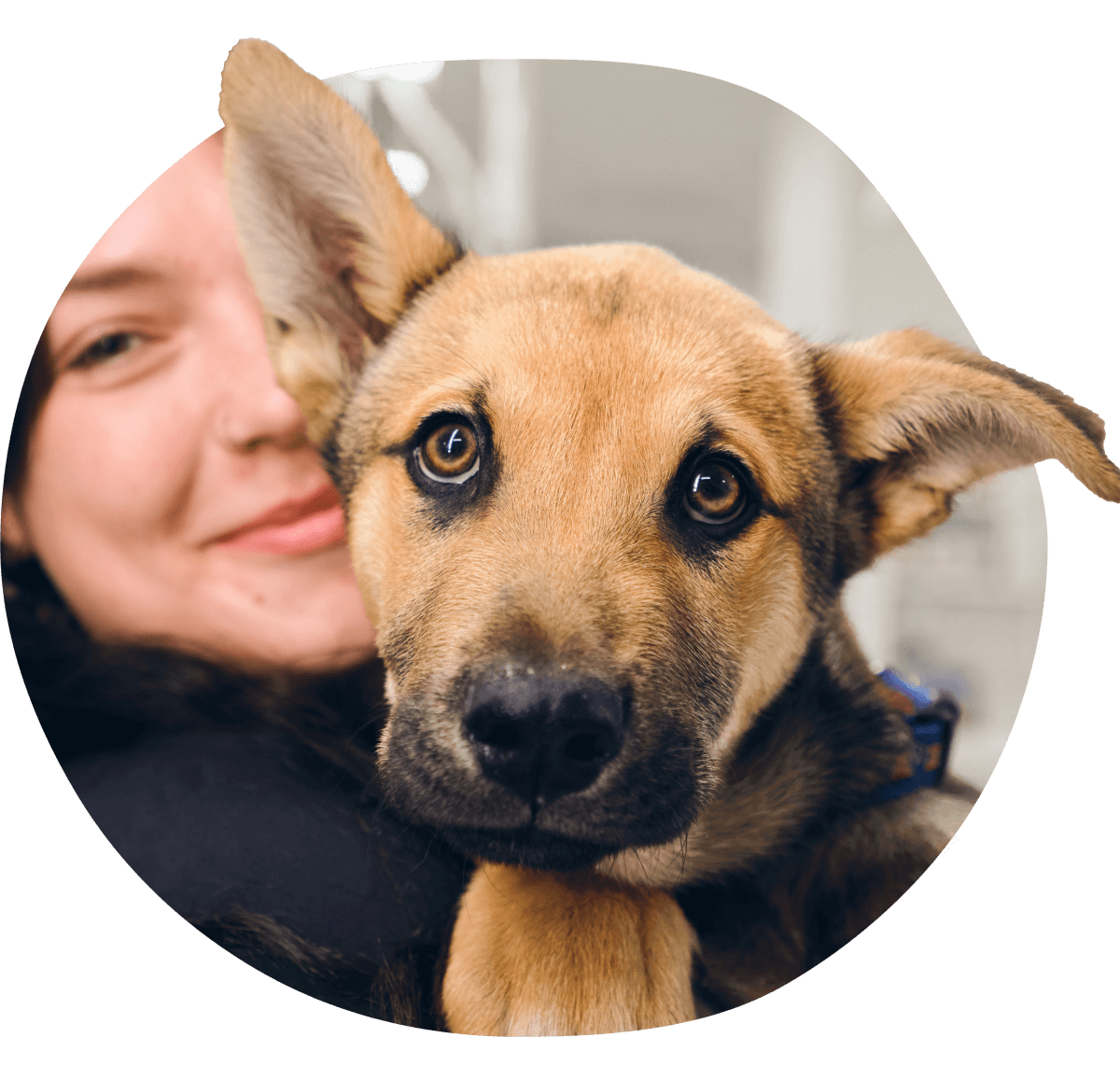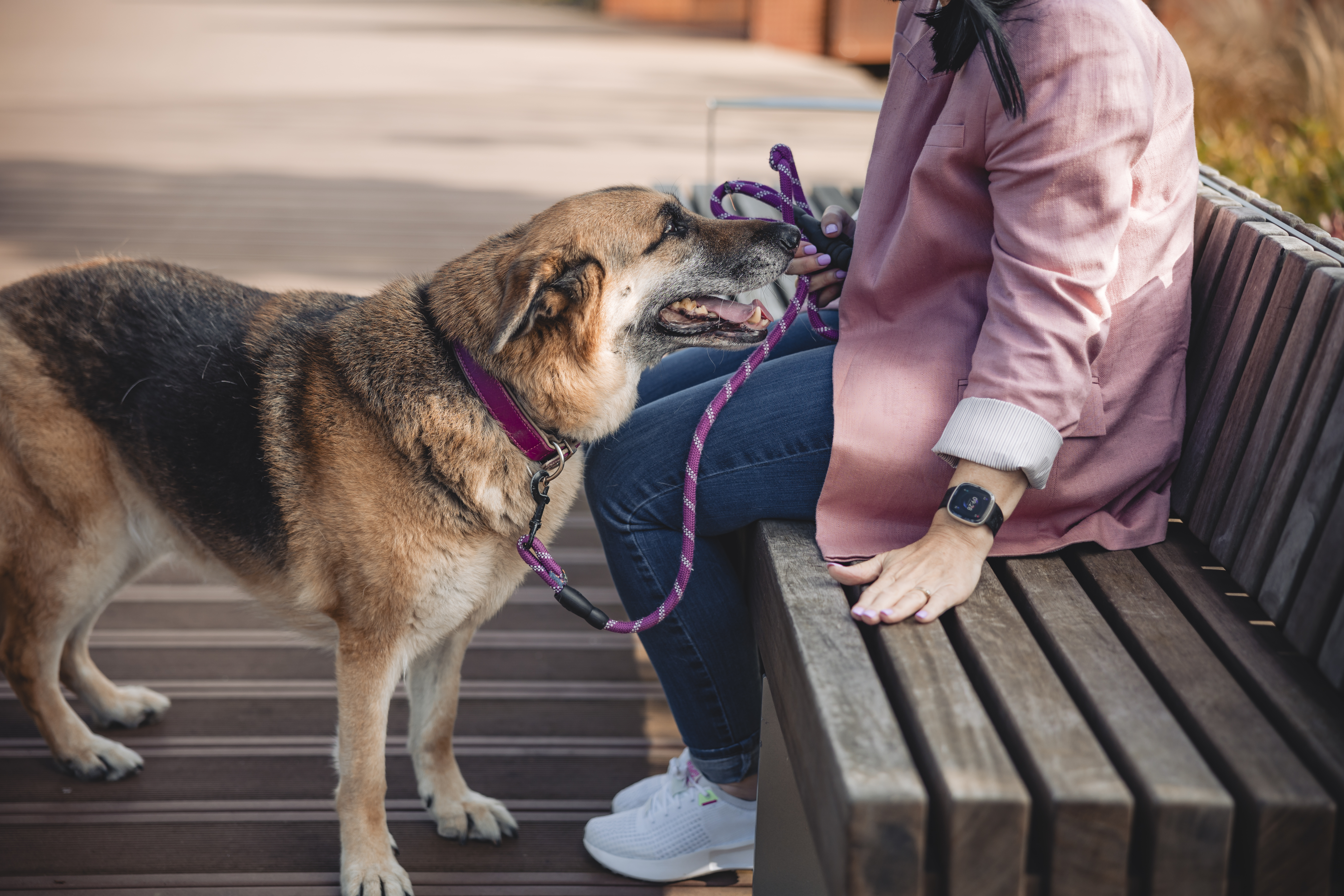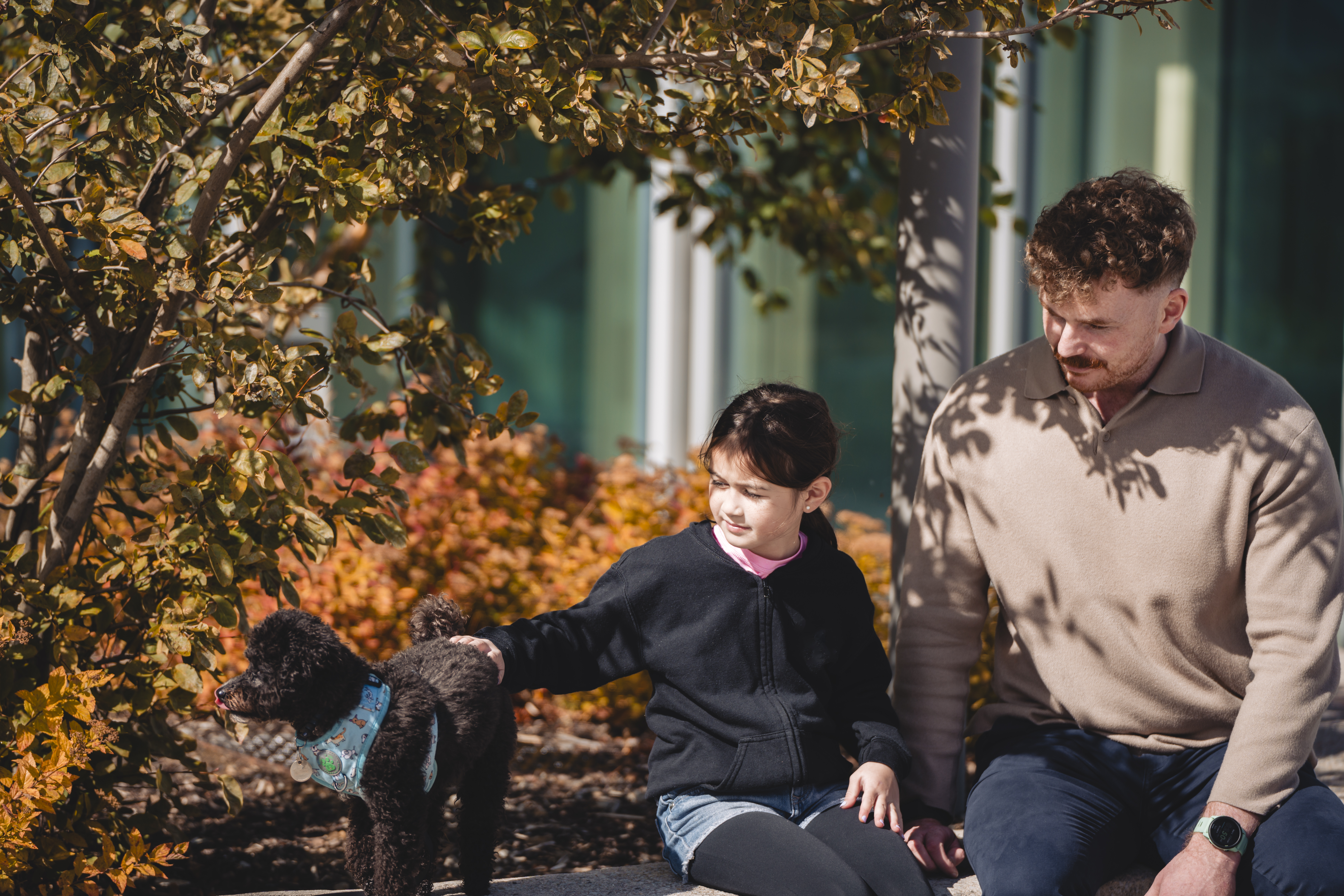Is your dog suffering from hair loss or skin irritation? We know this can be a worrying time. One thing that springs to many owners’ minds is the possibility of ringworm as the underlying cause. We’re here to explain ringworm in dogs in detail, including signs and treatment, so that you can ensure your dog gets the help they need.
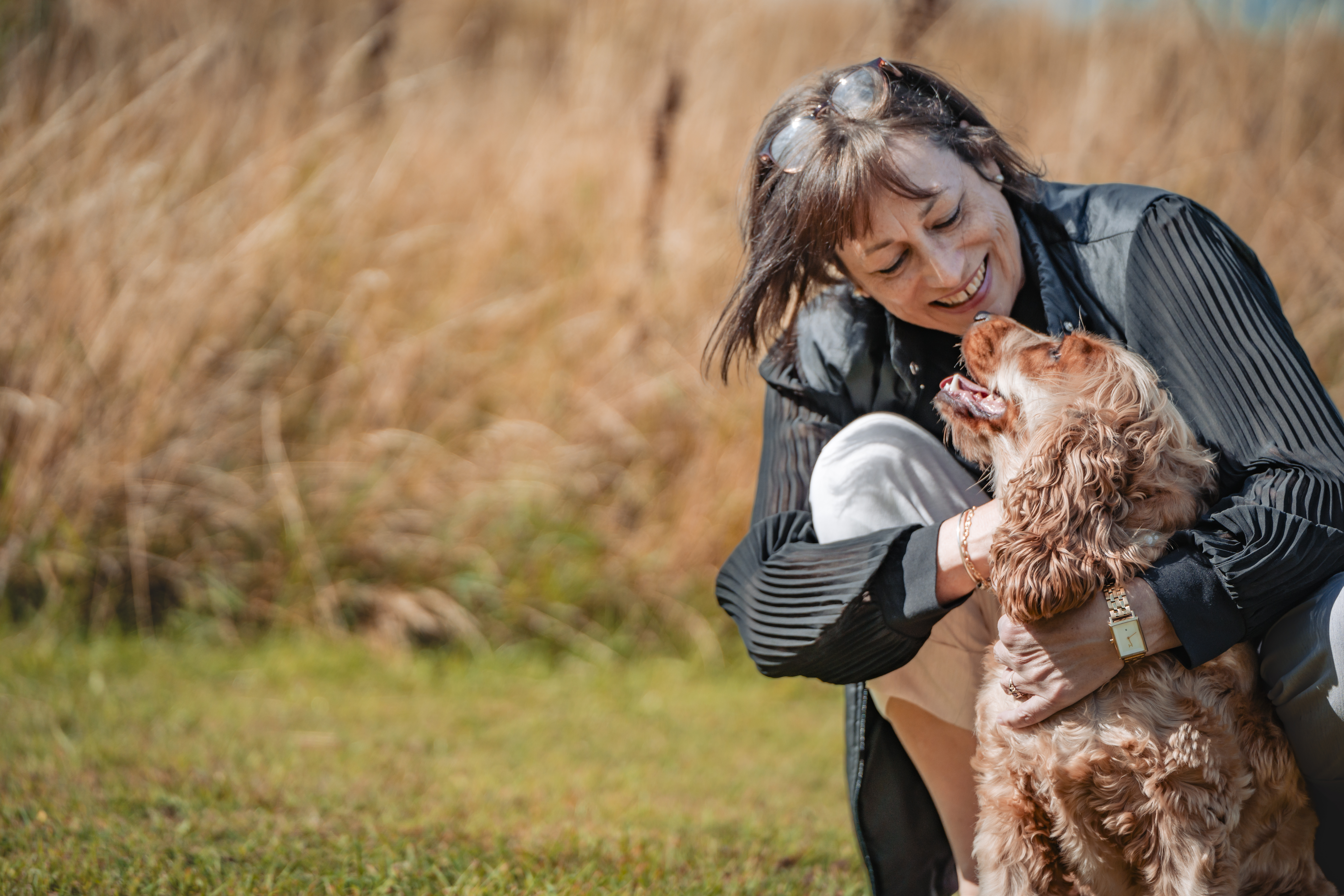
What is ringworm in dogs?
The term ringworm sounds a bit scary to many people, but it is not caused by a worm. Ringworm is actually a fungal infection that often creates characteristic circular or ring-like areas of skin irritation and hair loss. The technical name for this condition is Dermatophytosis and it is caused by microscopic fungi (dermatophytes) that thrive in warm and moist conditions.
This fungal infection can easily take hold in dogs that already have broken or inflamed skin. A normal healthy skin barrier is usually much more resistant to infection.
Ringworm can easily spread between other animals and people, either by direct contact or through contaminated items like bedding, carpets or toys.
What are the signs of ringworm in dogs?
Dogs with ringworm may have the following signs :
- Circular patches of hair loss - these may start small and increase in size over time.
- Dry, crusty or flaky skin - this will be most obvious in the patches of hair loss.
- Skin irritation or redness - your dog’s skin may sometimes become sore, inflamed or red.
- Increased itchiness - dogs with ringworm are at risk of secondary bacterial infections which can be itchy and add to skin inflammation.
- Fragile hairs - your dog’s hairs may come away more or break more easily, leaving behind fur that looks like it has been clipped.
- Rough or brittle claws - some dogs may have signs of the condition in their claws too.
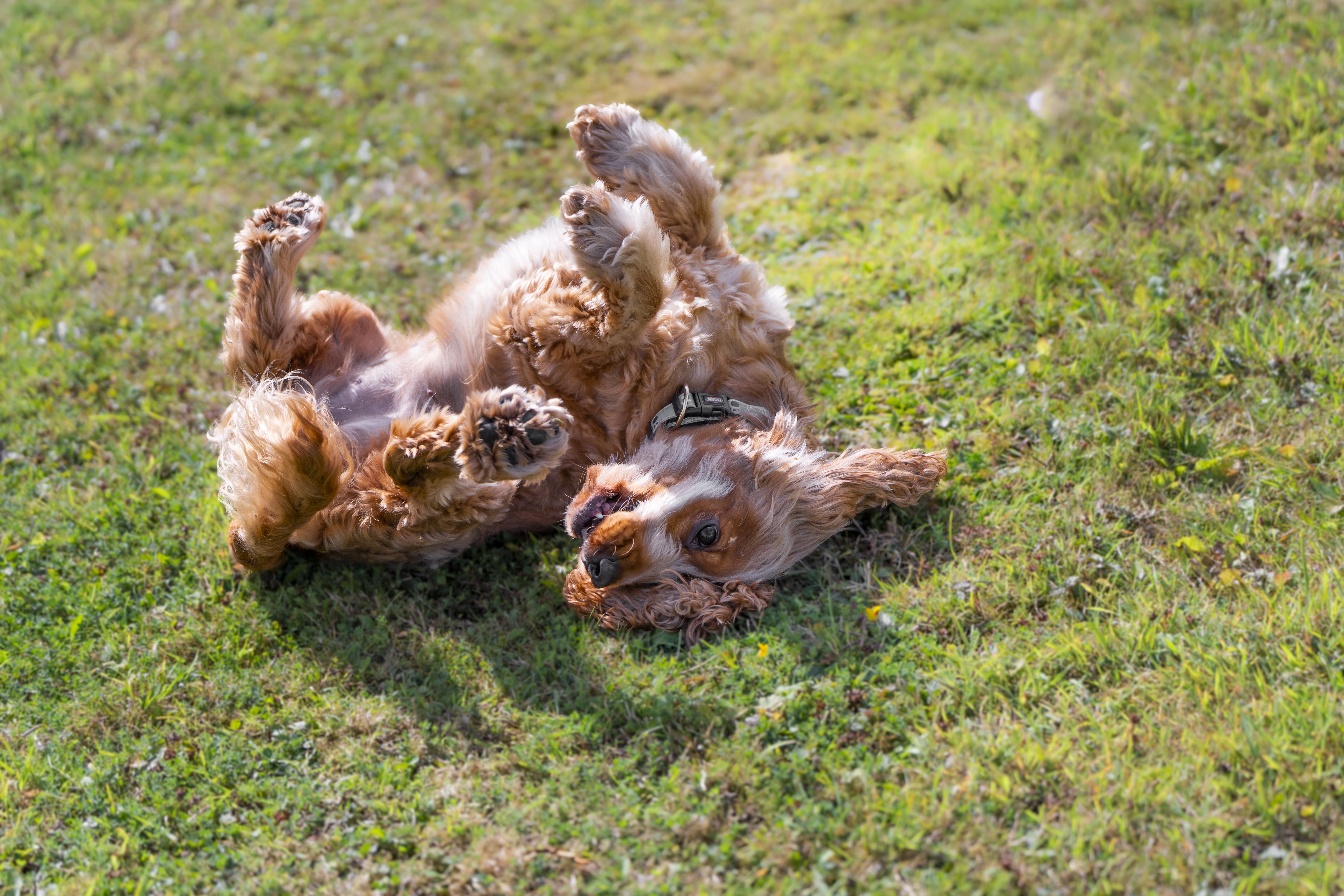
What should I do if I think my dog has ringworm?
If your dog is showing any of the listed signs then it’s very important to see your veterinarian. Many skin conditions can look similar, so it is important to get a proper diagnosis. Skin allergies, hormonal conditions (for example, hypothyroidism (underactive thyroid)) and parasites could also cause hair loss or itchiness.
Once your veterinarian has diagnosed the problem, they will be able to advise you on the best medication for your dog. As with all conditions, the sooner your pet is treated the more straightforward their treatment is likely to be.
How is ringworm diagnosed in dogs?
Your veterinarian will start by examining your dog and talking to you about their signs. Based on their findings they will suggest some more tests. These may include:
- Looking at your dog’s coat under a special UV light called a Wood’s lamp. Some types of fungi will glow or fluoresce under this light, making this a useful screening tool.
- Fungal cultures might be recommended. This is where your vet takes samples from your dog’s skin and coat using a clean toothbrush or by plucking the hair. These are then incubated in special growth media dishes to see if fungal spores are present. This can be slow but is very accurate.
- Direct examination of samples from your dog using a microscope.
- Examining your dog’s hair under magnification could lead to a diagnosis.
- A technique called Polymerase Chain Reaction (PCR) can be used to help with a diagnosis, providing answers more quickly than fungal culture. This amplifies the DNA in the provided sample and will show if ringworm is present or not.
All these tests and samples are non-invasive, meaning your pet will be comfortable throughout.
What is the treatment for ringworm infection in dogs?
Your veterinarian will advise you on the best treatment for your dog, but it usually includes:
- Topical treatment such as medicated shampoo, cream or ointment. Your veterinarian may also recommend shaving your dog’s fur in the affected area so that the treatment can reach their skin more easily. Topical treatment may need to be administered for several months to completely clear up the infection, in some cases.
- Oral medications might need to be used in combination with topical treatments. This anti-fungal medicine may need to be given for several weeks.
- Regularly decontaminating the environment by cleaning their bedding, vacuuming carpets, disinfecting surfaces and so on. Reinfection from contaminated sources is possible, and a common cause of disease relapse.
- Testing and treating other animals in your house.
- Anti-itch medication, which may help your dog stop scratching the irritated skin, thereby allowing it to heal.
Ringworm can take time to completely eradicate so it is important to follow your veterinarian’s instructions closely. Your veterinarian may also recommend re-testing your dog at the end of their treatment course to make sure the infection has completely resolved.
How do I prevent ringworm from spreading?
One of the problems with ringworm is that spores can live inside your dog’s hair follicles for a long time. Any shed hairs around your home could, therefore, contain infectious material. These spores won’t multiply in the environment, but they will lay dormant waiting to cause re-infection in your pet or other household members. This means regularly cleaning and disinfecting their environment is an important part of the treatment.
You will need to give your house a deep clean to reduce the number of hairs. Regular vacuuming of both the carpets and soft furnishings is essential. Just remember to immediately empty your vacuum cleaner outside, or throw away the bag, to stop the spread of fungal spores around your home. You will also need to machine wash your dog’s bedding and toys frequently and disinfect any hard floors.
We know all of this can be a bit of a pain, so you may decide to restrict your dog's access to easier-to-clean areas of the house. This can make regular cleaning simpler while your pet is being treated. This may also help to keep your dog isolated from other animals in the house to stop the spread between pets.
Make sure to wash your hands after handling your dog and speak to your doctor if you start showing any signs yourself. Fungal infections can spread to humans too, and people with weaker immune systems, like children or the elderly, are more likely to catch it.
Ringworm is an infectious fungal condition that can cause hair loss and skin inflammation. Your veterinarian is there to rule out other skin complaints and prescribe the right treatment, so make sure you contact them if you see any skin lesions in your dog. Treatment may take several weeks or months in some cases, so it is important to follow your veterinarian’s advice during this time.
We understand that ringworm can be frustrating for many pet owners. But the good news is that your dog will recover from this condition much faster if you get them checked out during the early stages of the disease.
Explore more on these topics
Select a country and language
Regulatory constraints and medical practices vary from location to location. Consequently, the information provided on the site in which you enter may not be suitable for use at your location.
Asia Pacific
Europe















Latin America







